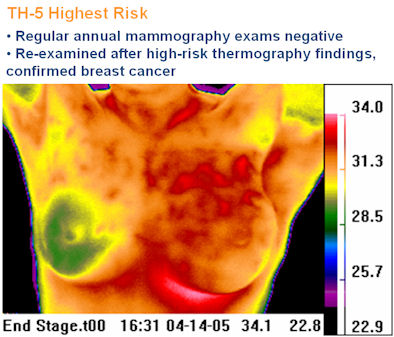Prefrontal Cortex and Addiction
The Prefrontal Cortex Plays Crucial Role in Addiction
 The prefrontal cortex enables us to make rational, sound decisions. It also helps us to override impulsive urges that may trigger reactions that are not in the best of our interests. If acted upon, these impulses urges can cause us to act without thinking. It is the prefrontal cortex that helps you to even maintain sound relationships around you. Each and every day you may be confronted by this impulsive urge but it is the prefrontal cortex that helps us think rationally and help override the impulsive urges. Obviously, this ability to inhibit impulses is very helpful. It enables us to function well in society. It protects us from harm by allowing us to consider the consequences of our actions. However, when the pre-frontal cortex is not functioning correctly, the opposite occurs. Addiction causes changes to the prefrontal cortex. These changes account for two characteristics of addiction: impulsivity and compulsivity.
The prefrontal cortex enables us to make rational, sound decisions. It also helps us to override impulsive urges that may trigger reactions that are not in the best of our interests. If acted upon, these impulses urges can cause us to act without thinking. It is the prefrontal cortex that helps you to even maintain sound relationships around you. Each and every day you may be confronted by this impulsive urge but it is the prefrontal cortex that helps us think rationally and help override the impulsive urges. Obviously, this ability to inhibit impulses is very helpful. It enables us to function well in society. It protects us from harm by allowing us to consider the consequences of our actions. However, when the pre-frontal cortex is not functioning correctly, the opposite occurs. Addiction causes changes to the prefrontal cortex. These changes account for two characteristics of addiction: impulsivity and compulsivity.
In the past years, the loss of control over drug intake that occurs in addiction was initially believed to result from disruption of subcortical reward circuits. However, current studies in addictive behaviors have identified a key involvement of the prefrontal cortex (PFC) both through its regulation of limbic reward regions and its involvement in higher-order executive function such as self-control, salience attribution and awareness.in this article we will try to revisit studies that have been done in the past so as to reach an understanding on how the prefrontal cortex is involved in drug addiction. Most studies have suggested that disruption of the PFC in addiction underlies not only compulsive drug taking but also accounts for the damaging behaviors that are associated with addiction and the loss of free will.
In a study where rats were used, it was found that stimulating a specific part of the brain reduces compulsive cocaine seeking. The finding proposes a potential approach to changing addictive behavior. This study and other studies that have been done show that the prefrontal cortex that is involved in decision-making and inhibitory response control is compromised in addiction. Deficits in the prefrontal cortex are involved in drug addiction The Deep-layer pyramidal pre-limbic cortex neurons; is a layer of cells that reach into areas of the brain that have been implicated in drug-seeking behaviors. Activating the Deep-layer pyramidal pre-limbic cortex neurons might reduce the rats’ cocaine seeking.
Medical experts and researchers agree that compulsive drug taking, which brings a myriad of health and social consequences, is one of the most challenging aspects of human drug addiction. In 2011, an estimated 1.4 million Americans age 12 and older were past-month cocaine users. No medications have been approved by the U.S. Food and Drug Administration for treating cocaine addiction. Obviously, cocaine addiction doesn’t affect America alone but the whole world.
Animal model studies
Drs. Billy Chen and Antonello Bonci at NIH’s National Institute on Drug Abuse (NIDA) have been using an animal model of cocaine addiction in a bid to gain insights into the neurobiology of compulsive drug use, trained rats learned to push levers to receive cocaine. When the cocaine doses were later followed by a mild electric shock to the foot, most rats stopped pushing the levers. Some rats, however, exhibited compulsive cocaine seeking by continuing to push the levers in spite of the foot shocks.
In this research, the researchers compared nerve cell firing patterns in the brains of the shock-sensitive and shock-resistant groups of rats. They studied a region of the prefrontal cortex that, in humans, is involved in decision making and inhibitory response control, which are both compromised in addiction. Their analysis focused on deep-layer pyramidal prelimbic cortex neurons because these cells reach into areas of the brain that have been implicated in drug-seeking behaviors. The study appeared online in Nature on April 3, 2013. The scientists found that almost twice as much current was needed to activate these neurons in compulsive cocaine-seeking rats than in the shock-sensitive rats or rats that hadn’t been exposed to cocaine. If these neurons are behind the rats’ compulsive behavior, the team reasoned, and then activating them might reduce the rats’ cocaine seeking behavior.
 For this study the scientists employed a light-based genetic, or optogenetic, technique to activate or inhibit pyramidal neurons in the prelimbic cortex at will. They injected harmless viruses engineered to deliver genes for producing proteins that, once embedded in the neuron’s surface this could induce or inhibit the cells’ activity in response to light of specific wavelengths. Tiny optic fibers were implanted in the rats’ brains to deliver light pulses to the cells. As predicted, activating these brain cells reduced cocaine seeking in the compulsive, shock-resistant rats. Inhibiting the cells in shock-sensitive rats increased cocaine seeking during foot-shock sessions.
For this study the scientists employed a light-based genetic, or optogenetic, technique to activate or inhibit pyramidal neurons in the prelimbic cortex at will. They injected harmless viruses engineered to deliver genes for producing proteins that, once embedded in the neuron’s surface this could induce or inhibit the cells’ activity in response to light of specific wavelengths. Tiny optic fibers were implanted in the rats’ brains to deliver light pulses to the cells. As predicted, activating these brain cells reduced cocaine seeking in the compulsive, shock-resistant rats. Inhibiting the cells in shock-sensitive rats increased cocaine seeking during foot-shock sessions.
“This exciting study offers a new direction of research for the treatment of cocaine and possibly other addictions,” says NIDA Director Dr. Nora D. Volkow. “We already knew, mainly from human brain emerging studies, that deficits in the prefrontal cortex are involved in drug addiction. Now that we have learned how fundamental these deficits are, we feel more confident than ever about the therapeutic promise of targeting that part of the brain.”, he concluded.
“By targeting a specific portion of the prefrontal cortex, our hope is to reduce compulsive cocaine seeking and craving in patients.” Bonci said as he reiterated that his group is now planning clinical trials to test noninvasive methods for stimulating this brain region in people. Dr. Dalal Akoury of AWAREmed Health and Wellness Center has dedicated her life to helping addicts restore their lives by use of integrative medicine. Call her on (843) 213-1480 for help.
The Prefrontal Cortex Plays Crucial Role in Addiction













 Coley’s Toxins and Alternative Cancer Treatment
Coley’s Toxins and Alternative Cancer Treatment


 Detoxification and Cancer treatment
Detoxification and Cancer treatment
 Opiates have been used for a long time in
Opiates have been used for a long time in  A patient undergoing opiate treatment will suffer these side effects but all will be well after some time when they have broken free from the dependence on these drugs. The levels of testosterone will surge to normal levels and so will estrogen in women. This process occurs naturally, however some people will opt for hormone supplementation which may work as the process of treatment is going on but doctors advise that this may not be good as it discourages the body to signal its natural hormone production.
A patient undergoing opiate treatment will suffer these side effects but all will be well after some time when they have broken free from the dependence on these drugs. The levels of testosterone will surge to normal levels and so will estrogen in women. This process occurs naturally, however some people will opt for hormone supplementation which may work as the process of treatment is going on but doctors advise that this may not be good as it discourages the body to signal its natural hormone production.






 Basically, this procedure has been hailed as an effective way of detecting the possible development of breast cancer in patients quite early. When properly used, breast thermography can play an important role in detecting the risk of breast cancer early thus allowing doctors to tackle the risk using the right measures.
Basically, this procedure has been hailed as an effective way of detecting the possible development of breast cancer in patients quite early. When properly used, breast thermography can play an important role in detecting the risk of breast cancer early thus allowing doctors to tackle the risk using the right measures.












